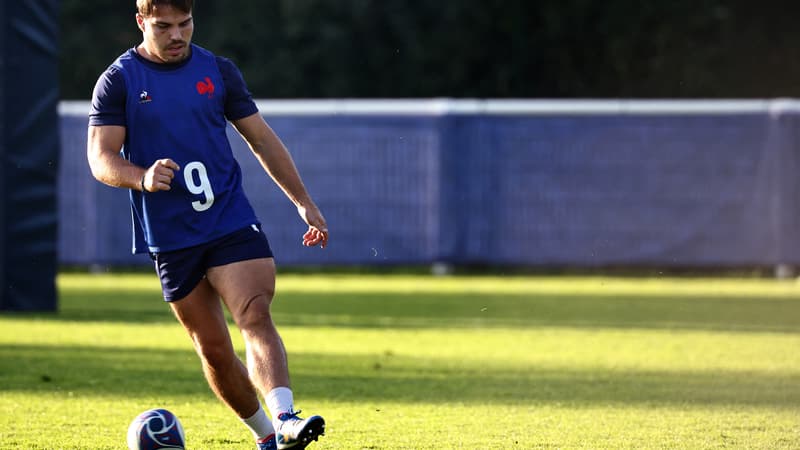Claude Bébéar (Axa), Jean-René Fourtou and Simon Gillham (Vivendi), Max Guazzini (NRJ), Mohed Altrad (Altrad Group), Isabelle Patrier (TotalEnergies), Jean-Laurent Granier (Generali), Jacky Lorenzetti (Foncia)… The list is not exhaustive in terms of big bosses, senior executives or businessmen who are passionate about the oval ball. The stands of the Stade de France this Sunday for France-South Africa will have the air of a businessman’s lounge. Because business and rugby are a long love story in France.
Very select employers’ clubs
The Rugby Club, founded in 2007 by Claude Bébéar d’Axa, former captain of the École Polytechnique XV team, is also one of the social clubs the most select of Paris. Currently chaired by Jean-Laurent Granier, CEO of Generali France, it has 350 members among the French business elite. It is accessed through sponsorship for a registration fee of 1,200 euros and a contribution of 550 euros per year.
On the meeting menu at this CSP++ club located near the Champs-Elysées: good wines, good dishes (star chef Guy Savoy is one of the founders) and rugby matches. Familiarity is essential, networks lower class and the distribution of business cards is very frowned upon. And it is not enough to be a well-known leader in Paris to be part of it. Those who do not have the codes are not accepted. You really need to know about rugby and not just the French star Antoine Dupont.
The same goes for Sport&Rugby, the other very influential club that brings together 500 big bosses. Almost 3,000 euros in annual membership fees, meals by chef Éric Frechon every month at the Bristol, but here too sponsorship is mandatory and “rugby codes” are required.
An idyllic vision of the business world
And when the managers don’t run to the stadium, it is rugby that comes to the company. Last June, TotalEnergies organized a day “Corporate values, rugby values” for its executives, recalls Challenges, co-organizer of the event.
Rugby constitutes a kind of ideal, even idyllic, vision of the business world. Unlike football which would be the negative side. This is what the bosses interviewed by BFM Business feel.
Elegant versus “money”?
Elegant sport versus “money” sport? The opposition between both disciplines unleashes passions in the business world (as in the political debate). Although the round ball obviously has many fans in the business and generates much more income than the oval in France (2.5 billion euros for the first compared to 547 million for the second), large French companies nevertheless prefer to stay away from it. . And the examples are numerous.
The very wealthy Saadé family, owner of the CMA-CGM shipowner, who once considered taking over Olympique de Marseille, immediately put an end to the rumors in La Provence. last summer. AND unequivocally through the voice of Tanya Saadé Zeenny, deputy general manager of the group.
The French shipping giant is even an exception by accepting its name to appear on the OM shirt. The big names of French capitalism are, for the most part, reluctant to even set foot in football. Not LVMH, TotalEnergies, L’Oréal or Airbus in the capital or on the shirts of Ligue 1 clubs.
If among the 116 logos that appear on the shirts of French football clubs there are 93 French companies, these are local companies or groups with less media exposure than the 40 CAC giants.
Associations thus represent around a quarter of professional football revenue, compared to 45% for the top 14 rugby clubs. Furthermore, the French rugby championship is considered the most powerful in the world; The shop windows of French clubs are adorned with European cups, while Ligue 1 is only the fifth continental economic power (and sixth in terms of results).
The disaffection of the business world does not alone explain this deficit of football with respect to rugby, but rather contributes to its relative fragility. Like the Sochaux-Montbéliard club, the historic bastion of the Peugeot family and which the automobile group no longer wants to hear about. Sold in 2014 to the Chinese group Ledus, the club was no longer part of the strategy of the automobile group, which then wanted to develop in luxury with its DS brand. Not really the image of the little yellows and blues of Sochaux.
Take rugby out of its chapel
Could this ultimately very French opposition between football and rugby be the transposition to the stadium of the rupture between the people and the elites? Because football is by far the most popular sport in France. The number of licensees exceeds 2.1 million when rugby is only the tenth most practiced sport (300,000 licensees). Ligue 1 attracted more than 9 million people to stadiums last season, compared to 2.7 million in the Top 14.
Rugby fans in the corporate world refuse to oppose the “rich white world of rugby” and the popular diversity of football.
To reach this audience, brands are beginning to use football codes such as this Adidas advertisement titled “This is the new rugby” filmed in football squares such as Bobigny, Saint-Denis or in the neighborhoods of Toulouse, Rueil or even Sète. Places far from the decision centers of the CAC 40.
Source: BFM TV


